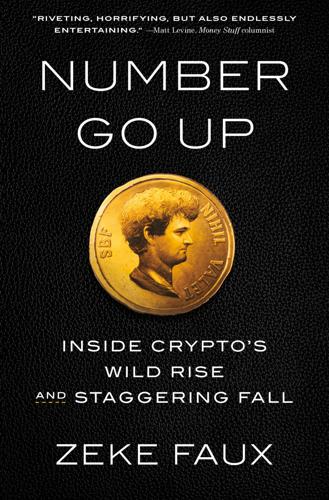
Number Go Up: Inside Crypto's Wild Rise and Staggering Fall
by
Zeke Faux
Published 11 Sep 2023
By then, there were $55 billion worth of Tether coins in circulation—an amount that would have made the cryptocurrency company one of the fifty largest banks in the United States. (Tiffany Hagler-Geard/Bloomberg) Engineers on a cherry picker inspect cryptocurrency mining rigs at the CryptoUniverse mining operation in Nadvoitsy, Russia, in 2021. That year, by some estimates, Bitcoin mining consumed as much energy as the entire country of Argentina, population 46 million. (Andrey Rudakov/Bloomberg) Sam Bankman-Fried, founder of the crypto exchange FTX, in the Bahamas in the spring of 2022, a few months after he relocated there. FTX had recently raised funding from venture capitalists at a valuation of $32 billion.
…
GO TO NOTE REFERENCE IN TEXT touched an all-time high: MacKenzie Sigalos, “Bitcoin Hits New All-Time High Above $68,000 as Cryptocurrencies Extend Rally,” CNBC, November 8, 2021. GO TO NOTE REFERENCE IN TEXT topped $3 trillion: Joanna Ossinger, “Crypto World Hits $3 Trillion Market Cap as Ether, Bitcoin Gain,” Bloomberg, November 8, 2021. GO TO NOTE REFERENCE IN TEXT 31.7 billion Tethers in 2021: “Tether Papers: This Is Exactly Who Acquired 70% of All USDT Ever Issued,” Protos, November 10, 2021. GO TO NOTE REFERENCE IN TEXT $25 billion valuation: Alexander Osipovich, “Crypto Exchange FTX Reaches $25 Billion Valuation,” Wall Street Journal, October 21, 2021.
…
“In this city we truly understand what it means to be the capital of capital,” he said. “It means to be the capital of Bitcoin.” Suarez declared he wanted to pay city employees in Bitcoin, to accept the cryptocurrency as payment for fines and taxes, and even for the city to invest in it. FTX, Sam Bankman-Fried’s crypto exchange, was paying $135 million for the naming rights to the Miami Heat’s NBA arena, owned by the city, and Suarez said the money would pay for anti-gun-violence programs and summer jobs for teens. The mayor equated Bitcoin’s doubters with his city’s skeptics, who liked to needle him about climate change by pointing out that streets flooded even on sunny days.

Easy Money: Cryptocurrency, Casino Capitalism, and the Golden Age of Fraud
by
Ben McKenzie
and
Jacob Silverman
Published 17 Jul 2023
Under this arrangement, buying Dogecoin on a crypto exchange like Binance was indeed an act of trustlessness, but only in the sense that it was hard to trust any offshore crypto entity. Most crypto investors were effectively putting their trust in the people running FTX, Binance, Bitfinex, or any one of the more than 500 exchanges in existence by 2022. While it was possible to hold the cryptocurrencies you owned off an exchange (referred to as self-custody), practically speaking this could be complicated and, therefore, was not done by the vast majority of crypto investors. “Not your keys, not your coins,” was the mantra thrown around by die-hard crypto fanatics, meaning you should keep your crypto in a “cold wallet” that didn’t touch an exchange—or even the internet.
…
.”: Alex Mashinsky (@Mashinsky), Twitter, December 3, 2022, https://twitter.com/mashinsky/with_replies. 229 the Blockchain Eight: David Dayen, “Congressmembers Tried to Stop the SEC’s Inquiry Into FTX,” The American Prospect, November 23, 2022, https://prospect.org/power/congressmembers-tried-to-stop-secs-inquiry-into-ftx/. 229 the year before: Tom Emmer (@GOPMajorityWhip), Twitter, December 8, 2021, https://twitter.com/GOPMajorityWhip/status/1468698269391880192. 230 a former general counsel: Jarod Facundo, “Sen. Gillibrand Hires Former Crypto Lawyer,” The American Prospect, December 2, 2022, https://prospect.org/power/sen-gillibrand-hires-former-crypto-lawyer/. 234 Alameda had invested $11.5 million: Stephen Gandel, “Crypto Firm FTX’s Ownership of a U.S. Bank Raises Questions,” New York Times, November 23, 2022, https://www.nytimes.com/2022/11/23/business/ftx-cryptocurrency-bank.html. 234 SBF was arrested in the Bahamas: CFTC complaint against FTX, United States District Court (Southern District of New York), December 21, 2022, https://www.cftc.gov/media/8021/enfftxtradingcomplaint122122/download. 237 In January 2023: Giulia Heyward, “Cryptocurrency giant Coin-base strikes a $100 million deal with New York regulators,” NPR, January 4, 2023, https://www.npr.org/2023/01/04/1146915338/coinbase-settlement-cryptocurrency-exchange-new-york-dfs.
…
While our discussion covered some fairly esoteric ground, to me it felt like home; just some obsessive dudes nerding out over how the cryptocurrency markets appeared rife with fraud. As one does. The episode was nominally about celebrities shilling cryptocurrencies and the insanity of the Super Bowl ad campaigns. I pointed out something I had been mulling over internally for weeks: If you acknowledged that crypto-currency markets resembled a Ponzi, then everything about the massive marketing campaigns made sense. If the entire crypto market was predicated on getting more regular folks to gamble via exchanges like eToro, Crypto.com, FTX, and Coinbase, then the exchanges had to go all out for the biggest TV audience of the year to reach the most potential customers.
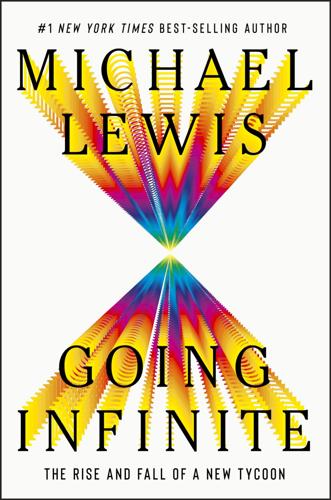
Going Infinite: The Rise and Fall of a New Tycoon
by
Michael Lewis
Published 2 Oct 2023
FTX allowed traders to borrow bitcoin and other easily sellable crypto against the value of their MobileCoin and BitMax holdings. The trader had inflated the value of MobileCoin and BitMax so that he might borrow actually valuable crypto against them from FTX. Once he had it he vanished, leaving FTX with a collapsing pile of tokens and a loss of $600 million worth of crypto. The size of those hacks was an exception, Sam said. All losses due to theft combined had come to just a bit more than $1 billion. In all cases, Gary had quietly fixed the problem and they’d all moved on and allowed the thieves to keep their loot.
…
Before I read that line, I had only ever heard Ray refer to Serum (and Solana and FTT) as “Sam Coins” or “shitcoins.” His view of crypto was a bit like his view of people. There was “the good shit” and “the bad shit.” (Though no naive shit.) I’d never tried to argue with him, in part because I thought he was sort of right. Still, there were distinctions worth making that he hadn’t bothered to make. FTT received an actual cash flow—the robust revenues from FTX—and so was more like corporate equity. Solana, because it could process tens of thousands more transactions per second than Bitcoin, was perhaps better designed than Bitcoin to fulfill Satoshi’s original vision and become a means of exchange.
…
It went roughly as follows: Global stocks traded $600 billion a day, crypto was now trading $200 billion each day, and the gap was closing. Inside of eighteen months, FTX had gone from nothing to the world’s fifth-biggest crypto exchange, and every day, it was seizing market share from its competitors. They were now the only crypto exchange making a priority of obtaining licenses and going legit. They were also the only crypto exchange that hadn’t in one way or another offended US financial regulators. Once licensed in the United States, a crypto exchange like FTX could also trade stocks or anything else people wanted to trade and challenge, for example, the New York Stock Exchange.

On the Edge: The Art of Risking Everything
by
Nate Silver
Published 12 Aug 2024
GO TO NOTE REFERENCE IN TEXT Bloomberg Odd Lots: Matt Levine, “Transcript: Sam Bankman-Fried and Matt Levine on How to Make Money in Crypto,” taizihuang.github.io, April 25, 2022, taizihuang.github.io/OddLots/html/odd-lots-full-transcript-sam-bankman-fried-and-matt-levine-on-crypto.html. GO TO NOTE REFERENCE IN TEXT Celsius had employed: Faux, Number Go Up, 176. GO TO NOTE REFERENCE IN TEXT own dubious token: David Gura, “FTX Made a Cryptocurrency That Brought in Millions. Then It Brought Down the Company,” NPR, November 15, 2022, sec. Business, npr.org/2022/11/15/1136641651/ftx-bankruptcy-sam-bankman-fried-ftt-crypto-cryptocurrency-binance. GO TO NOTE REFERENCE IN TEXT of nearly $2 billion: Erin Griffith and David Yaffe-Bellany, “Investors Who Put $2 Billion into FTX Face Scrutiny, Too,” The New York Times, November 11, 2022, sec.
…
“So if I deposit my Bitcoin with you, what are you going to do with that Bitcoin?” “I lend it out to FTX. FTX needs liquidity,” he answered instantly. “You can give it [directly] to FTX. Are they gonna pay anything? No. You deposit through me, I’ll squeeze them to give me three, four, or five times more than they’ll pay you. Because I have a million and a half people that are all together, marching as one.” “That makes sense,” I said, not sure it made any sense at all. “It’s very simple,” Mashinsky replied. What’s clearer is that FTX/Alameda had an appetite for as much crypto as it could get its hands on—and it sometimes borrowed it at interest rates as low as 6 percent from Celsius, far less than they’d been paying from other sources.
…
GO TO NOTE REFERENCE IN TEXT one of FTX’s subsidiaries: “FTX Digital Markets Ltd. (In Liquidation),” PricewaterhouseCoopers, accessed December 31, 2023, pwc.com/bs/en/services/business-restructuring-ftx-digital-markets.html. GO TO NOTE REFERENCE IN TEXT resigned as CEO: MacKenzie Sigalos, “Sam Bankman-Fried Steps down as FTX CEO as His Crypto Exchange Files for Bankruptcy,” CNBC, November 11, 2022, cnbc.com/2022/11/11/sam-bankman-frieds-cryptocurrency-exchange-ftx-files-for-bankruptcy.html. GO TO NOTE REFERENCE IN TEXT nerdy, overconfident, Adderall-popping: William Skipworth, “SBF’s Lawyers Are Asking the Judge for More Adderall,” Forbes, October 16, 2023, forbes.com/sites/willskipworth/2023/10/16/sbfs-lawyers-are-asking-the-judge-for-more-adderall.

More Everything Forever: AI Overlords, Space Empires, and Silicon Valley's Crusade to Control the Fate of Humanity
by
Adam Becker
Published 14 Jun 2025
Here’s How to Do the Most Good with Them,” Vox, August 3, 2015, www.vox.com/2015/7/29/9067641/william-macaskill-effective-altruism. 55 William MacAskill, “Replaceability, Career Choice, and Making a Difference,” Ethical Theory and Moral Practice 17 (2014): 269–283, https://doi.org/10.1007/s10677-013-9433-4. 56 William MacAskill, personal communication. 57 “Sam Bankman-Fried,” 80,000 Hours, archived June 13, 2021, at the Wayback Machine, https://web.archive.org/web/20210613111013/https://80000hours.org/stories/sam-bankman-fried/. 58 Fisher, “Sam Bankman-Fried Has a Savior Complex.” 59 Reed Albergotti and Liz Hoffman, “Charity-Linked Money Launched Sam Bankman-Fried’s Empire,” Semafor, December 8, 2022, www.semafor.com/article/12/07/2022/charity-money-launched-sam-bankman-frieds-empire. 60 White House, “FACT SHEET: Climate and Energy Implications of Crypto-Assets in the United States,” news release, September 8, 2022, www.whitehouse.gov/ostp/news-updates/2022/09/08/fact-sheet-climate-and-energy-implications-of-crypto-assets-in-the-united-states/; Hannah Ritchie, Pablo Rosado, and Max Roser, “CO2 and Greenhouse Gas Emissions,” database, Our World in Data, accessed March 27, 2023, https://ourworldindata.org/co2-and-greenhouse-gas-emissions. 61 “Crypto Firm FTX Trading’s Valuation Rises to $18 bln After $900 mln Investment,” Reuters, July 20, 2021, www.reuters.com/technology/crypto-firm-ftx-trading-raises-900-mln-18-bln-valuation-2021-07-20/. 62 Bill Chappell, David Gura, and Lisa Lambert, “Bankman-Fried Is Arrested as Feds Charge Massive Fraud at FTX Crypto Exchange,” NPR, December 13, 2022, www.npr.org/2022/12/12/1142361088/bankman-fried-ceo-ftx-crypto-exchange-arrested-bahamas-charges-sdny; David Gura, “Sam Bankman-Fried Is Found Guilty of All Charges in FTX’s Spectacular Collapse,” NPR, November 2, 2023, www.npr.org/2023/11/02/1210100678/sam-bankman-fried-trial-verdict-ftx-crypto; Rafael Nam, “Sam Bankman-Fried Sentenced to 25 Years in Prison for His FTX Crimes,” NPR, March 28, 2024, www.npr.org/2024/03/28/1241210300/sam-bankman-fried-ftx-sentencing-crimes-crypto-mogul-greed. 63 Zachary Robinson, “EV Updates: FTX Settlement and the Future of EV,” Effective Altruism Forum, December 13, 2023, https://forum.effectivealtruism.org/posts/HjsfHwqasyQMWRzZN/ev-updates-ftx-settlement-and-the-future-of-ev. 64 “Who We Are,” Future Fund, archived November 9, 2022, at the Wayback Machine, https://web.archive.org/web/20221109230958/https://ftxfuturefund.org/about/; “Our Grants and Investments,” Future Fund, archived November 9, 2022, at the Wayback Machine, https://web.archive.org/web/20221109231205/https://ftxfuturefund.org/our-grants/. 65 “Support Future Perfect,” Vox, August 18, 2022, www.vox.com/2020/1/7/21020439/support-future-perfect; Katie Clinebell, “By Returning $10M, Semafor Becomes the Latest Media Outlet Distancing Itself from SBF,” Investopedia, January 18, 2023, www.investopedia.com/media-outlets-are-returning-sam-bankman-fried-s-funds-7096408; “ProPublica Returns Grant Funded by Bankman-Fried Family,” ProPublica, February 28, 2022, updated December 20, 2022, www.propublica.org/atpropublica/bankman-fried-family-donates-5-million-to-propublica. 66 Dylan Matthews, “How Effective Altruism Let Sam Bankman-Fried Happen,” Vox, December 12, 2022, www.vox.com/future-perfect/23500014/effective-altruism-sam-bankman-fried-ftx-crypto. 67 Jennifer Szalai, “How Sam Bankman-Fried Put Effective Altruism on the Defensive,” New York Times, December 9, 2022, www.nytimes.com/2022/12/09/books/review/effective-altruism-sam-bankman-fried-crypto.html; Annie Lowrey, “Effective Altruism Committed the Sin It Was Supposed to Correct,” The Atlantic, November 17, 2022, www.theatlantic.com/ideas/archive/2022/11/cryptocurrency-effective-altruism-ftx-sam-bankman-fried/672149/; Gideon Lewis-Kraus, “Sam Bankman-Fried, Effective Altruism, and the Question of Complicity,” New Yorker, December 1, 2022, www.newyorker.com/news/annals-of-inquiry/sam-bankman-fried-effective-altruism-and-the-question-of-complicity; Nitasha Tiku, “The Do-Gooder Movement That Shielded Sam Bankman-Fried from Scrutiny,” Washington Post, November 17, 2022, www.washingtonpost.com/technology/2022/11/17/effective-altruism-sam-bankman-fried-ftx-crypto/; Eric Levitz, “Is Effective Altruism to Blame for Sam Bankman-Fried?
…
He even landed on the cover of Fortune magazine in August 2022, the same month What We Owe the Future was published, with a headline asking if Sam Bankman-Fried was “the next Warren Buffett.” You probably already know the rest of the story. Sam Bankman-Fried’s cryptocurrency exchange, FTX, imploded in November 2022. He and his lieutenants at FTX used customers’ private account funds to cover trades made by Alameda Research, which Bankman-Fried (aka SBF) and his EA gang were still running as a hedge fund alongside the trading firm. When Alameda’s funds crashed with the crypto market in fall 2022, FTX’s customers were left holding the bag, with an estimated $8 billion in customer funds gambled away on bad bets and poured into luxury real estate, political donations, and other extravagant purchases by Bankman-Fried and company.
…
Here’s How to Do the Most Good with Them,” Vox, August 3, 2015, www.vox.com/2015/7/29/9067641/william-macaskill-effective-altruism. 55 William MacAskill, “Replaceability, Career Choice, and Making a Difference,” Ethical Theory and Moral Practice 17 (2014): 269–283, https://doi.org/10.1007/s10677-013-9433-4. 56 William MacAskill, personal communication. 57 “Sam Bankman-Fried,” 80,000 Hours, archived June 13, 2021, at the Wayback Machine, https://web.archive.org/web/20210613111013/https://80000hours.org/stories/sam-bankman-fried/. 58 Fisher, “Sam Bankman-Fried Has a Savior Complex.” 59 Reed Albergotti and Liz Hoffman, “Charity-Linked Money Launched Sam Bankman-Fried’s Empire,” Semafor, December 8, 2022, www.semafor.com/article/12/07/2022/charity-money-launched-sam-bankman-frieds-empire. 60 White House, “FACT SHEET: Climate and Energy Implications of Crypto-Assets in the United States,” news release, September 8, 2022, www.whitehouse.gov/ostp/news-updates/2022/09/08/fact-sheet-climate-and-energy-implications-of-crypto-assets-in-the-united-states/; Hannah Ritchie, Pablo Rosado, and Max Roser, “CO2 and Greenhouse Gas Emissions,” database, Our World in Data, accessed March 27, 2023, https://ourworldindata.org/co2-and-greenhouse-gas-emissions. 61 “Crypto Firm FTX Trading’s Valuation Rises to $18 bln After $900 mln Investment,” Reuters, July 20, 2021, www.reuters.com/technology/crypto-firm-ftx-trading-raises-900-mln-18-bln-valuation-2021-07-20/. 62 Bill Chappell, David Gura, and Lisa Lambert, “Bankman-Fried Is Arrested as Feds Charge Massive Fraud at FTX Crypto Exchange,” NPR, December 13, 2022, www.npr.org/2022/12/12/1142361088/bankman-fried-ceo-ftx-crypto-exchange-arrested-bahamas-charges-sdny; David Gura, “Sam Bankman-Fried Is Found Guilty of All Charges in FTX’s Spectacular Collapse,” NPR, November 2, 2023, www.npr.org/2023/11/02/1210100678/sam-bankman-fried-trial-verdict-ftx-crypto; Rafael Nam, “Sam Bankman-Fried Sentenced to 25 Years in Prison for His FTX Crimes,” NPR, March 28, 2024, www.npr.org/2024/03/28/1241210300/sam-bankman-fried-ftx-sentencing-crimes-crypto-mogul-greed. 63 Zachary Robinson, “EV Updates: FTX Settlement and the Future of EV,” Effective Altruism Forum, December 13, 2023, https://forum.effectivealtruism.org/posts/HjsfHwqasyQMWRzZN/ev-updates-ftx-settlement-and-the-future-of-ev. 64 “Who We Are,” Future Fund, archived November 9, 2022, at the Wayback Machine, https://web.archive.org/web/20221109230958/https://ftxfuturefund.org/about/; “Our Grants and Investments,” Future Fund, archived November 9, 2022, at the Wayback Machine, https://web.archive.org/web/20221109231205/https://ftxfuturefund.org/our-grants/. 65 “Support Future Perfect,” Vox, August 18, 2022, www.vox.com/2020/1/7/21020439/support-future-perfect; Katie Clinebell, “By Returning $10M, Semafor Becomes the Latest Media Outlet Distancing Itself from SBF,” Investopedia, January 18, 2023, www.investopedia.com/media-outlets-are-returning-sam-bankman-fried-s-funds-7096408; “ProPublica Returns Grant Funded by Bankman-Fried Family,” ProPublica, February 28, 2022, updated December 20, 2022, www.propublica.org/atpropublica/bankman-fried-family-donates-5-million-to-propublica. 66 Dylan Matthews, “How Effective Altruism Let Sam Bankman-Fried Happen,” Vox, December 12, 2022, www.vox.com/future-perfect/23500014/effective-altruism-sam-bankman-fried-ftx-crypto. 67 Jennifer Szalai, “How Sam Bankman-Fried Put Effective Altruism on the Defensive,” New York Times, December 9, 2022, www.nytimes.com/2022/12/09/books/review/effective-altruism-sam-bankman-fried-crypto.html; Annie Lowrey, “Effective Altruism Committed the Sin It Was Supposed to Correct,” The Atlantic, November 17, 2022, www.theatlantic.com/ideas/archive/2022/11/cryptocurrency-effective-altruism-ftx-sam-bankman-fried/672149/; Gideon Lewis-Kraus, “Sam Bankman-Fried, Effective Altruism, and the Question of Complicity,” New Yorker, December 1, 2022, www.newyorker.com/news/annals-of-inquiry/sam-bankman-fried-effective-altruism-and-the-question-of-complicity; Nitasha Tiku, “The Do-Gooder Movement That Shielded Sam Bankman-Fried from Scrutiny,” Washington Post, November 17, 2022, www.washingtonpost.com/technology/2022/11/17/effective-altruism-sam-bankman-fried-ftx-crypto/; Eric Levitz, “Is Effective Altruism to Blame for Sam Bankman-Fried?

The Quiet Coup: Neoliberalism and the Looting of America
by
Mehrsa Baradaran
Published 7 May 2024
To see what a system values, we must look at what it values in dollars and cents—or who it trusts with abundant credit. One need look no further than Sam Bankman-Fried and FTX. Frustrated that, as a conventional quantitative trader in the mid-2010s, he could only ever achieve 1 percent spreads at most, Bankman-Fried began to explore cryptocurrencies, specifically bitcoin, in search of higher yield. He quickly discovered that he could make much more spread in a day trading in the Asian crypto market than he could make in years of high-frequency trading. Guided by the ambition to find the most efficient use of capital possible, he began buying crypto through an online exchange and selling it within a day. It was a classic “buy low, sell high” strategy that is the one consistent rule of wealth accumulation, no matter the market.
…
Using his gains and his knowledge, in 2019 Bankman-Fried created FTX, a platform where other traders like him could speculate in crypto markets and mine for more yield. Before its spectacular collapse in November 2022, FTX was the epitome of the venture- and crypto-captialists’ dream of the future of money: decentralized finance (DeFi). In the world of DeFi, counterparties trade derivatives contracts—the same weapons of mass destruction that blew up during the financial crisis—but for cryptocurrencies. Much like the financiers of the early to mid-aughts, DeFi platform founders assure investors that it is nearly impossible to lose money in cryptotrading because of the “advanced statistical models” created by quants to slice and dice cryptoassets into various securities, including—yes—mortgage-backed cryptoassets.15 The types of trades on FTX ran the gamut: price speculation on cryptotokens, NFTs, and derivatives of NFTs, as well as variations on sports betting and speculation in the prediction markets.
…
But just because some of the antibodies have gone haywire doesn’t mean that they’re not responding to real harm. THE CRYPTOCURRENCY INDUSTRY began as a backlash to neoliberal hypocrisy even as it doubled down on neoliberal myths about money and society. Bitcoin sought to create the monetary system of Hayek’s and Friedman’s dreams—rooted in scarcity and free of state control. The explosion of cryptocurrencies and the so-called blockchain revolution began with the launch of bitcoin, which began as a reaction to the bank bailouts. In 2009, Satoshi Nakamoto—a pseudonym for the actual creator—laid out the code and logic of bitcoin. Bitcoin was a new form of currency, “mined” by computer algorithm through end-to-end encryption that would be a fixed unit of exchange existing on the blockchain.
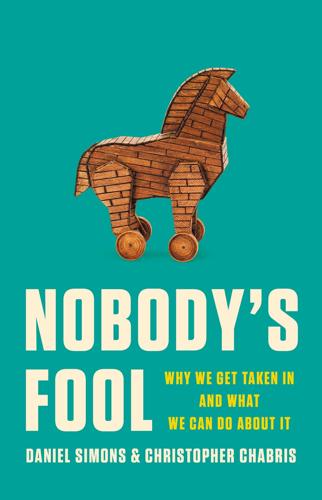
Nobody's Fool: Why We Get Taken in and What We Can Do About It
by
Daniel Simons
and
Christopher Chabris
Published 10 Jul 2023
But when these sorts of minor deceptions become business as usual—when millions of people are exposed to made-up quotations, distorted history, or fictitious scientific results—our collective trust in what should be nonfiction declines, and that adversely impacts our ability to reach rational conclusions.20 Even schemes that do take our money can be surprisingly banal at their core. FTX was a popular trading platform for cryptocurrencies like Bitcoin, and it was backed by top-tier venture capitalists and attracted users with celebrity endorsements and Super Bowl ads. Its customer agreement said, “Title to your Digital Assets shall at all times remain with you.” But when FTX filed for bankruptcy in November 2022, it was discovered that it had been sending customer deposits to a sister company called Alameda Research, which used them to fund its own trading and investment activities—that is, FTX was simply making promises and doing the opposite.21 Examples like these show that knowing when we should pause to check and what we should check for are not obvious.
…
A month later, he disappeared.1 Kumbhani was the founder of BitConnect, an organization that offered a way for people to participate in the market for cryptocurrencies, or “crypto”—digital assets whose values are not tied to any particular government’s policies or actions. Bitcoin, the original and most famous cryptocurrency, was invented in 2008 by one or more people using the pseudonym “Satoshi Nakamoto.” Bitcoin has a finite supply, and its value is connected to that scarcity. In that way, it is less like a regular currency than like gold or oil; you can “mine” more Bitcoin, metaphorically, by spending computational resources (literally, computer processing time and the energy required to power it) to solve complicated mathematical problems.
…
Indictment filed February 25, 2022, US District Court, Southern District of California [https://storage.courtlistener.com/recap/gov.uscourts.casd.727918/gov.uscourts.casd.727918.1.0_1.pdf]; press release [https://www.justice.gov/opa/pr/bitconnect-founder-indicted-global-24-billion-cryptocurrency-scheme]. Glenn Arcano pleaded guilty to participating in the conspiracy to defraud BitConnect investors [https://www.justice.gov/opa/pr/56-million-seized-cryptocurrency-being-sold-first-step-compensate-victims-bitconnect-fraud]. 2. The original publication on Bitcoin is S. Nakamoto, Bitcoin: A Peer-to-Peer Electronic Cash System, October 31, 2008 [bitcoin.org/bitcoin.pdf]. See also F. Schär and A. Berentsen, Bitcoin, Blockchain, and Cryptoassets: A Comprehensive Introduction (Cambridge, MA: MIT Press, 2020). 3. S. Williams, “The 20 Largest Cryptocurrencies by Market Cap,” The Motley Fool, December 15, 2017 [https://www.fool.com/investing/2017/07/20/the-20-largest-cryptocurrencies-by-market-cap.aspx]. 4.
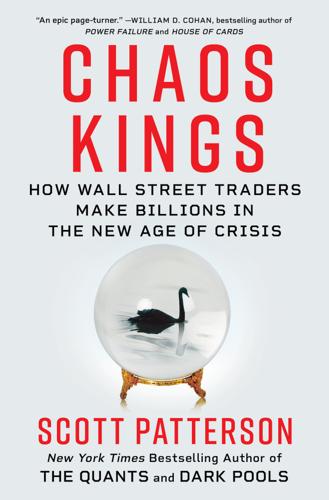
Chaos Kings: How Wall Street Traders Make Billions in the New Age of Crisis
by
Scott Patterson
Published 5 Jun 2023
As bitcoin plunged, one crypto billionaire was marshaling his forces—and his billions—to salvage it. Sam Bankman-Fried, the thirty-year-old titan of a sprawling crypto empire, started snapping up struggling crypto exchanges from Canada to Japan. Seeking to boost popular interest in crypto, the mercurial CEO of cryptocurrency exchange FTX Trading appeared in magazine ads alongside supermodel Gisele Bündchen and shelled out millions for a pro-crypto commercial featuring Larry David during the 2022 Super Bowl. Bankman-Fried, who’d become known for his unruly shock of curly hair and aversion to business suits, was an adherent of an increasingly influential semi-apocalyptic worldview known as longtermism—a movement that shared elements of Taleb’s precautionary principle.
…
CHAPTER 23: THE GREAT DILEMMA OF RISK Spitznagel’s argument captivated Peter Coy Peter Coy, “The Risk-Return Trade-Off Is Phony,” New York Times, November 15, 2021, https://www.nytimes.com/2021/11/15/opinion/risk-investing-market-hedge.html. CHAPTER 24: DOORSTEP TO DOOM Bitcoin rallied in 2021, hitting an all-time high Elaine Yu and Caitlin Ostroff, “Bitcoin’s Price Climbs Above $20,000 After Sharp Crypto Selloff,” Wall Street Journal, June 19, 2022, https://www.wsj.com/articles/bitcoins-price-falls-below-20-000-11655542641. As bitcoin plunged, one crypto billionaire Alexander Osipovich, “The 30-Year-Old Spending $1 Billion to Save Crypto,” Wall Street Journal, August 23, 2022, https://www.wsj.com/articles/crypto-bitcoin-ftx-bankman-fried-11661206532. Since saving the human race is the one and only priority Christine Emba, “Why ‘Longtermism’ Isn’t Ethically Sound,” Washington Post, September 5, 2022, https://www.washingtonpost.com/opinions/2022/09/05/longtermism-philanthropy-altruism-risks/.
…
Given the chance that miners could at some point lose interest in bitcoin, in theory reducing its value to zero, he argued that its present value was zero. What likely made Taleb even more dismissive about the digital currency was that it had fallen even more than the market in the crisis of March 2020, showing it was demonstrably worthless as a tail hedge against Black Swans. After tumbling in the Covid-pandemic crash, bitcoin rallied in 2021, hitting an all-time high of $67,801 in November. But in 2022, as the Fed began to crank rates higher, it and other cryptocurrencies collapsed, wiping roughly $2 trillion from the broader crypto market. As bitcoin plunged, one crypto billionaire was marshaling his forces—and his billions—to salvage it.
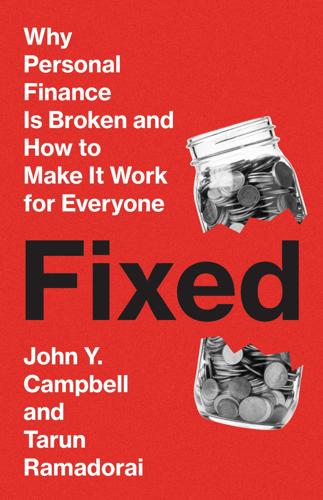
Fixed: Why Personal Finance is Broken and How to Make it Work for Everyone
by
John Y. Campbell
and
Tarun Ramadorai
Published 25 Jul 2025
A recent article in Wired suggests that Thomas may not currently be as eager to crack the code as was once imagined: Andy Greenberg, “They cracked the code to a locked USB drive worth $235 million in Bitcoin. Then it got weird,” Wired, October 24, 2023, https://www.wired.com/story/unciphered-ironkey-password-cracking-bitcoin. 22. For Africrypt and the Cajee brothers, see Loni Prinsloo, “Africrypt investors push for charges against Cajee brothers,” January 4, 2022, https://techcentral.co.za/africrypt-investors-push-for-charges-against-cajee-brothers/206356/. For an introduction to FTX and the criminal use of cryptocurrencies, see Zeke Faux, Number Go Up: Inside Crypto’s Wild Rise and Staggering Fall (Crown Currency, 2023). 23. The crypto exchange CoinDesk lists several different types of common scams on crypto platforms, many of which are age-old scams that have simply taken on a new form in the new DeFi environment.
…
DeFi not only poses dangers to its users; it also raises issues for society more broadly. Bitcoin and other cryptocurrencies are rapidly becoming the payment vehicle facilitating illicit transactions and criminal activity around the world, and we should therefore have strong moral reservations against encouraging crypto as a mode of payment. On the infamous Silk Road, an online marketplace on the dark web that permitted transactions in guns, drugs, and child pornography, the only currency accepted was Bitcoin. While this website has been shut down, the use of crypto as a vehicle for this type of activity has been increasing.27 Paradoxically, according to Europol, the volatility of cryptocurrencies has inhibited their use as a payment vehicle.
…
While this website has been shut down, the use of crypto as a vehicle for this type of activity has been increasing.27 Paradoxically, according to Europol, the volatility of cryptocurrencies has inhibited their use as a payment vehicle. This is because criminals are savvy about the deleterious effects of crypto fluctuations on the value of their long-term investments!28 Another issue is that many DeFi transactions, including exchanges of Bitcoin, must be monitored and recorded by “miners,” who employ vast amounts of computing power to extend the blockchain and are rewarded with cryptocurrency holdings. The required computations use prodigious amounts of electricity, estimated by the US Energy Information Administration to account for at least 0.6% and possibly as much as 2.3% of US electricity consumption in 2023.29 This resource cost is particularly concerning given the strains on the world energy system posed by the transition to renewable energy to mitigate climate change.
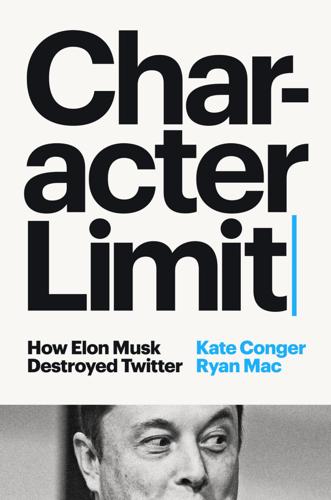
Character Limit: How Elon Musk Destroyed Twitter
by
Kate Conger
and
Ryan Mac
Published 17 Sep 2024
Musk also left room for crypto money. Even without Bankman-Fried, he saw plenty of opportunity in the FTX head’s crypto contemporaries. Morgan Stanley pitched the deal to Brian Armstrong, the chief executive of Coinbase, and to the Web3 Foundation, an organization that sought to develop other decentralized digital currencies beyond Bitcoin. But it was Binance, the world’s largest crypto exchange, that pulled the trigger. The company, led by an enigmatic Chinese-born founder named Changpeng Zhao, was flush. It facilitated more than $75 billion in daily trading volume of cryptocurrencies including Ethereum, Dogecoin, and others.
…
Along with Jared Birchall and Michael Kives, Michael Grimes pushed to get Sam Bankman-Fried to invest. Wooed by the FTX leader’s head spinning accumulation of wealth—he was already reported to be worth more than $22 billion at thirty years old—and his coterie of connections from Tom Brady to Bill Clinton to Tony Blair, Grimes told Musk the crypto billionaire would be willing to put at least $3 billion and up to $10 billion into Twitter. Grimes called Bankman-Fried an “ultra genius and doer builder” in the mold of his current client. “Does Sam actually have $3B liquid?” Musk asked the banker, skeptical of the crypto entrepreneur. Musk continued to dodge him. “Sorry, who is sending this message?”
…
Musk continued to dodge him. “Sorry, who is sending this message?” Musk wrote to Bankman-Fried on May 5 after the crypto billionaire texted him, despite having been connected to the FTX leader twice via message. Bankman-Fried never put into the deal any of the billions he promised to Grimes and others, though Musk did invite him to roll over his existing stake in Twitter—about $100 million—to convert into shares in his private company. (Musk would later claim that Bankman-Fried never did.) Six months later, FTX collapsed and Bankman-Fried landed in jail for defrauding customers. He was later sentenced to twenty-five years in prison.
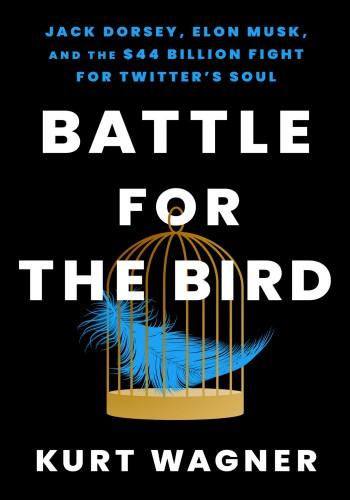
Battle for the Bird: Jack Dorsey, Elon Musk, and the $44 Billion Fight for Twitter's Soul
by
Kurt Wagner
Published 20 Feb 2024
Square’s users could buy and sell Bitcoin just like stocks, and while it wasn’t yet public, Square was preparing to build its own Bitcoin wallet for storing the currency offline. Dorsey was even building an entirely new business division within Square to focus exclusively on Bitcoin, which would launch a month after Miami. In crypto jargon, Dorsey’s unwavering commitment to the currency made him a “Bitcoin maxi”—short for “Bitcoin maximalist,” and even shorter for “guy who thinks Bitcoin is the one and only true cryptocurrency.” To most people outside of crypto, Dorsey just looked like a hard-core Bitcoin hobbyist. He still had two full-time jobs, after all.
…
Gayle King was also back with another interview request. “This is as the kids of today say a ‘gangsta move,’ ” she messaged him. Marc Merrill, the cofounder of Riot Games, wrote Musk that he was “the hero Gotham needs,” and even Sam Bankman-Fried, the CEO of the cryptocurrency exchange FTX, reached out to try to set up a meeting. (Within eighteen months, FTX would crash and Bankman-Fried would be convicted on seven counts of fraud, conspiracy, and money laundering.) No one was more excited than Musk’s friend Jason Calacanis. They had met years earlier when Calacanis was a tech journalist and later bought the very first Tesla Model S from Musk after its release in 2012.
…
The Twitter CEO was in town for Bitcoin 2021, a conference dedicated to the cryptocurrency that had started to consume his life. Dorsey spent much of the weekend talking about Bitcoin with anyone who would listen. “He’s a huge Bitcoin guy. Huge,” said Dave Portnoy, the outspoken and controversial founder of Barstool Sports. Portnoy had chatted with Dorsey and Grutman over dinner one night at one of the Miami mogul’s other restaurants, Komodo, and was floored by Dorsey’s infatuation with the digital currency. “He actually said if he could, like, get a job where he’s just working on Bitcoin full-time, he’s so confident in it, he’d like stop everything else and just work on Bitcoin,” Portnoy later said on his podcast.

The Great Wave: The Era of Radical Disruption and the Rise of the Outsider
by
Michiko Kakutani
Published 20 Feb 2024
Here’s How Future Polkadot Founder Gavin Wood Explained It in 2014,” Yahoo, Jan. 4, 2022, yahoo.com/video/3-future-polkadot-founder-gavin-155942673.html. GO TO NOTE REFERENCE IN TEXT Bitcoin was released: Joshua Davis, “The Crypto-currency,” The New Yorker, Oct. 3, 2011, newyorker.com/magazine/2011/10/10/the-crypto-currency. GO TO NOTE REFERENCE IN TEXT spectacular crash of the cryptocurrency exchange: Paul R. La Monica, “Crypto Crash and Gold Sell-Off Show There’s No Place for Investors to Hide,” CNN Business, Nov. 10, 2022, cnn.com/2022/11/10/investing/bitcoin-crypto-ftx-gold. GO TO NOTE REFERENCE IN TEXT “associations of a thousand” kinds: Alexis de Tocqueville, Democracy in America, trans.
…
In 2014, Gavin Wood, a co-founder of the platform Ethereum, argued that “post-Snowden” it had become clear that it was dangerous to entrust our information to “large organizations and governments” that “routinely attempt to stretch and overstep their authority.” Bitcoin was released as an open-source program in early 2009 by the mysterious Satoshi Nakamoto (possibly a pseudonym for an individual or group), who said that in the wake of the 2008 crash, he wanted to create a secure currency that would be impervious to manipulation by bankers, politicians, and national monetary policies. Bitcoin and other cryptocurrencies gained popularity as bitterness over bank bailouts grew and investors welcomed the idea of skirting government and Wall Street control. Proponents argue that cryptocurrency will transform commerce and the financial services industry—depending on how it is regulated and how widely it is adopted by the mainstream marketplace.
…
Proponents argue that cryptocurrency will transform commerce and the financial services industry—depending on how it is regulated and how widely it is adopted by the mainstream marketplace. Others worry that its rapid growth could be destabilizing, that it could facilitate money laundering and criminal exploitation, and that investing in a currency which possesses no intrinsic value is extremely hazardous—a warning underscored by the spectacular crash of the cryptocurrency exchange FTX in the fall of 2022. Blockchain, advocates contend, has the potential to disrupt industries from e-commerce to music sales to health care by creating virtually tamperproof records and allowing retailers to sell directly to customers without intermediaries. Whereas people now tend to place their trust in marketplaces like Amazon and eBay, blockchain will supposedly empower buyers to make trustworthy purchases directly from manufacturers and vendors.

The Optimist: Sam Altman, OpenAI, and the Race to Invent the Future
by
Keach Hagey
Published 19 May 2025
Louis, 23–25, 27, 30, 32–33, 39–54 ClickFacts, 77, 82 Clinton, Bill, 205, 274, 292 Clinton, Hillary, 201 CNBC, 305 Coalition for a Better Acre, 35 Cobbin, Darryl, 102 Coca-Cola Company, The, 102 Cockburn, Chloe, 213 “code caves,” 175–76, 246–47 Codex AI software development bot, 262 Coffee Cartel, Clayton, Missouri, 50–51 Cohen, Ryan, 260–61 Cohen-Esrey property management company, 53 “Coherent Extrapolated Volition” (Yudkowsky), 143 Coinbase, 158 “Collison installation,” 246 Collison, John, 125, 157, 175 Collison, Patrick, 90, 124–25, 136, 157, 175–76, 190 Comcast, 229 Common Crawl, 243–44 Communication Design Group (CDG), 197–98 compute, 193, 216–19, 221, 224, 243, 245, 282, 298, 306, 314 Amazon Web Services, 111, 119, 187, 216 the case of AI Dungeon, 247–48, 254–55 as the currency of the future, 298 enormous infrastructure costs of running location services, 119 graphics processing units (GPUs), 176, 181–82, 219, 247, 255 see also energy production Computer Fraud and Abuse Act, 68 Computer History Museum, Mountain View, CA, 139 computer vision, 168, 182, 184, 247 “Computing Machinery and Intelligence” (Turing), 173–74 Concorde (airplane), 133, 135 Condé Nast, 81, 160–62 Conference on Neural Information Processing Systems (NIPS/NeurIPS), 178, 186, 305 conflicts of interest, 225, 236, 303 Conrad, Parker, 139 Consensus Organizing Institute, 40 conspiracy theories, 253 Continental Bank, 34 Continuity Fund at YC, 159, 194, 232–33, 290 Contrarian, The (Chafkin), 205, 258 convertible notes, 94–95, 138 Conway, Ron, 123, 138, 309 Cook, Tim, 229 copyright, 160n, 220, 243, 244 Cornell, 67 Corteau, Kate, 65 Cotra, Ajeya, 277 Country Day School, St. Louis, 27, 45 Coursera course on machine learning, 266 Covid-19, 246, 248–50 criminal justice reform, 213 Crowley, Dennis, 118–19 cryptocurrency, 13, 212, 256 Bitcoin, 142 Coinbase, 158 FTX crypto market, 212, 257 initial coin offering (ICO), 221–22 Worldcoin, 13, 256–57 culture, see tech bros Cummings, Dominic, 205 cybersecurity, 68, 106, 140, 154, 200 DAG Ventures, 117 Dahar, Robin, 158–59 Dai, Wei, 142 Daily Caller, 204 Daily News, 29 Daley, Richard J., 21, 34 DALL-E, 255, 262–63, 268 Daly City, CA, 162 D’Angelo, Adam, 234, 278–79, 284–86, 288, 289, 293 Danzeisen, Matt, 1 De Freitas, Daniel, 270–71 deal flow, 88, 95, 124 Dean, Jeff, 187 “Decoding Intentions: Artificial Intelligence and Costly Signals” (Toner), 285 Deep Blue, 191 “deep learning,” 146–47 deepfakes, 241–42, 263 DeepMind, 146–48, 154, 168–69, 171–72, 184, 189–94, 211, 221, 270 Defense Advanced Research Projects Agency (DARPA), 140, 196 “Del Mar divide” in St.
…
In 2019, as if to answer the question of how UBI would be distributed, he quietly co-founded a company called Tools for Humanity that in 2021 announced it would release a cryptocurrency called Worldcoin, which would be a “collectively owned global currency that will be distributed fairly to as many people as possible,” as its website put it. To get some, people simply had to gaze into a chrome orb the size of a bowling ball that scanned their irises and attached them to a unique identifier that would ensure that no one else could try to claim their share of Worldcoin. The for-profit company, which would go on to raise some $500 million from top VCs including Andreessen Horowitz and Khosla Ventures as well as crypto enthusiasts like FTX founder Sam Bankman-Fried—a portion of the tokens would be reserved for investors—hired contractors in countries from Kenya to Indonesia to cart around the orb and encourage as many signups as possible.
…
Then, in 2013, MacAskill brought his message of “earning to give” to a math prodigy and physics major at MIT named Sam Bankman-Fried, convincing him to go into finance. Two years after that, 80,000 Hours joined that summer’s YC batch. SBF, as he became infamously known—first as the CEO of FTX and a cryptocurrency mogul, and then as a criminal—would become one of EA’s biggest donors before he was indicted for fraud and conspiracy in 2022. Meanwhile, on another track, two early career analysts at the giant hedge fund Bridgewater Associates, Holden Karnofsky and Elie Hassenfeld, formed a charity club in 2006 with their colleagues.
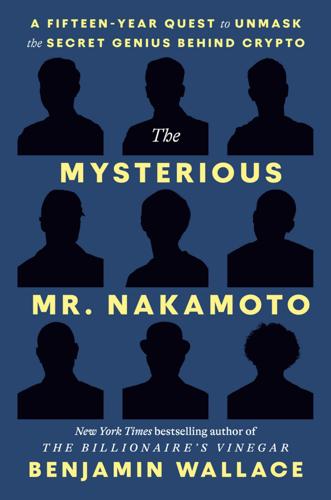
The Mysterious Mr. Nakamoto: A Fifteen-Year Quest to Unmask the Secret Genius Behind Crypto
by
Benjamin Wallace
Published 18 Mar 2025
Each boom was bigger than the last, and so was each bust. In the most recent run-up, a bitcoin had topped a new high of $69,000, and in the most recent collapse, the cryptocurrency exchange FTX had joined the leaderboard of history’s biggest financial frauds. Bitcoiners could justly complain that the scams were unrelated to Bitcoin itself; they were examples, in fact, of the problem of trusted third parties that Bitcoin used decentralization to solve. But Bitcoin, with its values of pseudonymity and the bypassing of governments and banks, wasn’t entirely off the hook. I wondered whether there were crypto people who knew or suspected that Donald was Nakamoto.
…
GO TO NOTE REFERENCE IN TEXT a conclave of Bitcoin brains: Bitcoin and Cryptocurrency Research Conference, Department of Computer Science, Princeton University, March 27, 2014. GO TO NOTE REFERENCE IN TEXT “My Father Is an Honest Guy” “Even if it’s NOT him”: Rob Wile, “Bitcoin Community Goes into a Rage over Newsweek Story,” Business Insider, March 6, 2014. GO TO NOTE REFERENCE IN TEXT a rumor circulated at a Bitcoin conference: Andy Greenberg, “Nakamoto’s Neighbor: My Hunt for Bitcoin’s Creator Led to a Paralyzed Crypto Genius,” Forbes, March 25, 2014.
…
A year later, Marc Andreessen, who had pioneered the web browser before becoming a venture capitalist, said: “We’re quite confident that when we’re sitting here in twenty years, we’ll be talking about Bitcoin the way we talk about the Internet today.” And the more time passed, the longer Bitcoin went without itself being successfully hacked, the more solid it felt. And now, thirteen years after its launch, a single bitcoin was worth more than $65,000, and Bitcoin was just part of a much larger industry. Crypto, which had long been shorthand for cryptography, stood, to the chagrin of cryptographers, for cryptocurrency. There were, almost unbelievably, more than sixteen thousand different cryptocurrencies in existence—riffs of one sort or another on the first and only one that had existed in 2011. Collectively, they had recently passed $3 trillion in value.
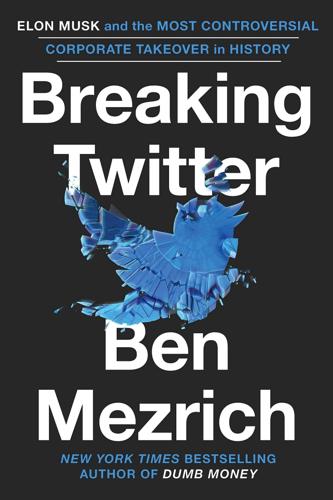
Breaking Twitter: Elon Musk and the Most Controversial Corporate Takeover in History
by
Ben Mezrich
Published 6 Nov 2023
After first making a name for himself at Jane Street Capital, then starting his own quantitative trading firm, called Alameda Research, at thirty, SBF had founded FTX, one of the fastest-growing crypto exchanges in the world. The stories about SBF were legendary, and unavoidable. How he’d first pitched FTX to a room full of Sequoia Capital VCs, waxing poetic about making his exchange “a place where you can do anything you want with your next dollar,” from buying crypto to art to goddamn produce, all the while his head hovered inches above his laptop, never once breaking from the screen to make eye contact. It was only after most of the room had committed to funding the idea that someone had walked close enough to see SBF’s computer screen.
…
Elon could respect a little Zuckerbergian disassociation when it came to dealing with VCs, but other stories he’d heard about SBF and the work culture at FTC and Alameda had a darker tinge. Crypto exchanges, especially those with headquarters overseas, were notoriously sketchy. Though FTX had a US component and engaged in massive mainstream marketing—Super Bowl ads! Stadium naming rights! Celebrity endorsements as varied as Tom Brady and Larry David!—SBF had moved all of his upper management to the Bahamas, installing his coterie of crypto whiz kids in a lavish, $60 million campus. In all, SBF and his team had spent nearly three hundred million dollars in real estate on the island.
…
In all, SBF and his team had spent nearly three hundred million dollars in real estate on the island. SBF himself shared a $40 million penthouse with nine roommates, including the titular heads of Alameda and FTX—and according to the rumors, there was a lot more going on in that tropical, crypto Valhalla than the late-night tweaking of trading algorithms. Stories of massive amounts of drug use and rampant polyamorous relations abounded; at one point or another, all ten roommates had paired or tripled up. Like Elon, SBF was a prominent believer in simulation theory, but it appeared the quest he was playing in the video game of life had veered NC-17. Simulation theory, meet stimulation theory.
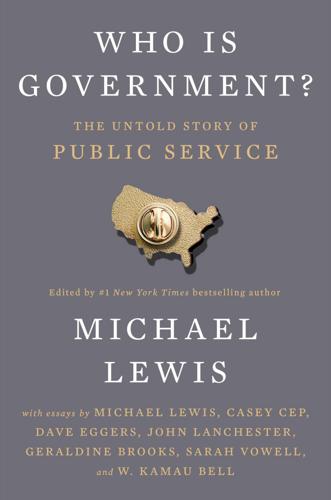
Who Is Government?: The Untold Story of Public Service
by
Michael Lewis
Published 18 Mar 2025
They didn’t want to risk the thumb drive with their $300 million winding up in the pocket of a torn pair of jeans that the housekeeper threw out (the plot of an episode of “Silicon Valley”). They wanted something that looked like a brokerage through which to buy, sell and store their crypto. Exchanges such as FTX and Binance spun up, often overseas, looking sort of like regular financial institutions, but coloring way outside regulatory lines drawn to protect investors and the stability of the financial system. In 2018, Koopman had leads revealing that Binance, with 20 to 30 percent of the U.S. market and $65 billion in U.S. transactions a day, was failing to comply with the rules that govern any financial services business that has U.S. customers.
…
* * * — It was sometime in 2012, Koopman recalls, that he started talking with a young agent he supervised in South Bend, Indiana, named Chris Janczewski about cryptocurrency. Janczewski’s two-person office was a sleepy place, and he sometimes filled his downtime listening to podcasts. “It was Joe Rogan, of all people,” who put bitcoin on his radar. Rogan was interviewing Andreas Antonopoulos, a Greek entrepreneur, “who was explaining bitcoin to Joe like he was a 5-year-old, and that made it easy for me to understand it.” When Koopman came to visit, the two started a series of conversations about the potential and the risks of the new currency.
…
But back in the 12th century, the Mongols had trouble getting people to accept the innovation of paper money. Bitcoin’s origins were idealistic: It was designed by a pseudonymous computer scientist after the 2008 financial crisis revealed the precarity of the existing financial system. It was a cryptographically created store of value, requiring immense amounts of computer power to generate, meant to exist outside the control of governments. It allowed individuals anywhere to transact without the intervention of third parties, such as the banks that had failed and the stock exchanges that had plunged. In a bitcoin crypto transaction, a string of 64 characters—upper- and lowercase letters and numbers—is called a hash.

Empire of AI: Dreams and Nightmares in Sam Altman's OpenAI
by
Karen Hao
Published 19 May 2025
GO TO NOTE REFERENCE IN TEXT Bankman-Fried, or SBF: David Yaffe-Bellany, “A Crypto Emperor’s Vision: No Pants, His Rules,” New York Times, May 14, 2022, nytimes.com/2022/05/14/business/sam-bankman-fried-ftx-crypto.html. GO TO NOTE REFERENCE IN TEXT As he amassed his wealth: Rebecca Ackermann, “Inside Effective Altruism, Where the Far Future Counts a Lot More Than the Present,” MIT Technology Review, October 17, 2022, technologyreview.com/2022/10/17/1060967/effective-altruism-growth. GO TO NOTE REFERENCE IN TEXT At the start of 2022: “Announcing the Future Fund,” FTX Future Fund, archived on November 27, 2022, at web.archive.org/web/20221127183608/https://ftxfuturefund.org/announcing-the-future-fund.
…
They began ramping up funding to the key issue areas that MacAskill had recommended—its grants toward AI safety research in particular were guided by the EA framework. Open Philanthropy became an independent organization in June 2017. More recently, a new tech billionaire had entered the scene: Samuel Bankman-Fried, a rapidly rising star for his wild success cofounding the crypto exchange FTX and crypto trading firm Alameda Research. Bankman-Fried, or SBF as he is known, credited EA for his origin story. A physics major at MIT, he said he had wanted to be an academic before MacAskill convinced him over lunch of the moral superiority of “earn to give.” SBF subsequently set his course on making himself as rich as possible in order to eventually, he pledged, put it all into philanthropy.
…
With the sudden collapse of FTX in the early days of November, it was getting swept up in the fallout. Just months before, it had raised $580 million, $500 million of which an FTX press release had said was from SBF and other senior leaders. Financial documents released during the trial would later find that that money had been sourced from the billions that SBF had embezzled from FTX customer deposits, turning the Anthropic investment into a central issue during the trial over whether the significant returns generated from it could be used to pay back customers. (A judge would rule that it could, and FTX would sell off its Anthropic shares in batches through 2024 for a total of $1.3 billion.)
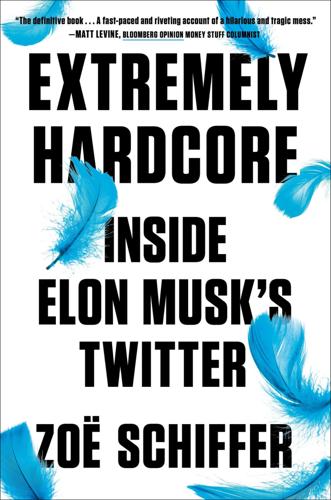
Extremely Hardcore: Inside Elon Musk's Twitter
by
Zoë Schiffer
Published 13 Feb 2024
Musk’s free speech poll piqued the interest of William MacAskill, a Scottish philosopher and architect of the effective altruism movement, which takes a utilitarian approach to philanthropy in an effort to maximize the benefit of every donation. “I’m not sure what’s on your mind, but my collaborator Sam Bankman-Fried has for a while been potentially interested in purchasing [Twitter] and then making it better for the world,” MacAskill said, referencing the billionaire wunderkind behind FTX, then the world’s second-biggest cryptocurrency exchange. “Does he have huge amounts of money?” Musk asked. “Depends on how you define ‘huge’!” MacAskill said. “He’s worth $24B, and his early employees (with shared values) bump that to $30B. I asked about how much he could in principle contribute and he said ‘~$1–3b would be easy ~$3–8b I could do ~$8–15b is maybe possible but would require financing.’ ” Musk wasn’t convinced.
…
He asked MacAskill if he vouched for Bankman-Fried. “Very much so!” MacAskill responded. “Very dedicated to making long-term future of humanity go well.” Musk agreed to meet with the crypto kid, and the pair ended up talking for half an hour. But Musk felt like something was off. He often led with his intuition, and his intuition was telling him not to trust Bankman-Fried, no matter how many people thought he was a savant. “My bullshit meter was redlining,” he said after FTX collapsed in November 2022. “There’s something wrong, and he does not have capital, and he will not come through. That was my prediction.” Likewise, Bankman-Fried thought Musk was nuts, according to Walter Isaacson.
…
” * * * — By now, the engineering team was used to Musk’s impulsive management style. His priorities seemed dictated by what he saw on his feed. In December, Musk noticed a verified account using his avatar photo was promoting a cryptocurrency scam on Twitter. “He wants to know why it was missed,” Ella Irwin wrote on Slack. An employee explained that the account promoting the scam had been verified under Twitter’s legacy verification system. The account had been hacked and the new owner was promoting crypto. Twitter had locked the account and removed Musk’s photo from its profile. The scam hadn’t been immediately spotted because the tool Twitter used to detect suspicious activity, Smyte, was unstable.

Supremacy: AI, ChatGPT, and the Race That Will Change the World
by
Parmy Olson
He took a job at a quantitative trading firm and eventually founded the crypto-currency exchange FTX in 2019. Bankman-Fried put effective altruism front and center of that business. His cofounders and management team were effective altruists and kept MacAskill on as a member of the FTX Future Fund, which would go on to give $160 million to effective altruism causes in 2022, some of which were directly linked to MacAskill. He frequently talked to the press about giving all his money away, and in large posters advertising FTX, he was pictured in his trademark T-shirt and cargo shorts, flanked by the words: “I’m in on crypto because I want to make the biggest global impact for good.”
…
Buying Twitter, for instance, didn’t tick any obvious boxes for helping humanity in the long term, but Bankman-Fried was ready to spend as much as $8 billion to buy the site with Musk and stand on a pedestal with the world’s richest man, as an act of effective altruism. After FTX imploded, MacAskill took to Twitter to do damage control: “A clear-thinking [effective altruist] should strongly oppose ‘ends justify the means’ reasoning,” he tweeted. Yet the movement’s own principles incentivized people like Bankman-Fried to reach their goals by whatever means necessary, even if that meant exploiting people. It created a myopia that affected even an intelligent Oxford academic like MacAskill, who had chosen to attach himself to someone running a crypto exchange, knowing full well that crypto businesses were speculative at best and a dangerous form of gambling at worst.
…
Moskovitz’s charity vehicle Open Philanthropy had put $30 million into OpenAI, and Altman had financially backed Moskovitz’s own software Asana; however, Moskovitz wanted to back OpenAI’s new competitor too. (Tallinn would later say he regretted helping stoke so much competition in AI, making it potentially more dangerous.) Within a year Anthropic had raised another $580 million, mostly from the wealthy young founders of the crypto exchange FTX, who found their way to Amodei thanks to their shared interests in effective altruism. Ironically, two years after Amodei had complained about OpenAI’s commercial ties with Microsoft, he would take more than $6 billion in investment from Google and Amazon, aligning himself with both companies.
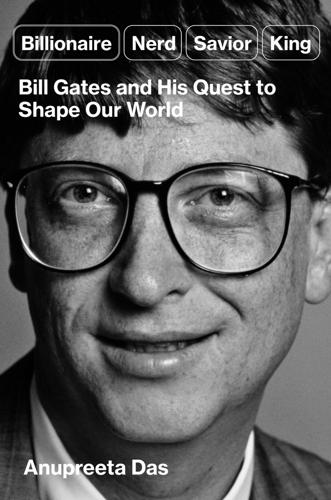
Billionaire, Nerd, Savior, King: Bill Gates and His Quest to Shape Our World
by
Anupreeta Das
Published 12 Aug 2024
When Channing Robertson, a professor at Stanford University, met Holmes, he realized that he “could have just as well been looking into the eyes of a Steve Jobs or a Bill Gates.”25 Once the nerd-philosopher-genius-king of the cryptocurrency industry before his nosedive into disgrace, Sam Bankman-Fried, the founder of crypto exchange FTX, grew his empire rapidly on the back of $2 billion raised from investors; at its peak, the start-up was valued at $32 billion. He was as notable for the breathless rise of his crypto exchange as for his shock of unkempt hair and cargo shorts, prompting The New York Times to call him a “studiously disheveled billionaire.” In fact, when a colleague told Bankman-Fried to clean up his appearance, he demurred, saying that it was all part of the image and would be helpful rather than harmful.26 Popular Culture Stereotypes the Nerd In the 1980s, as the idea of using computer programming for commercial benefit gained steam, personal computers infiltrated people’s homes and offices.
…
One of the biggest philanthropic ideas to take hold in the Valley in recent years, especially among younger billionaires, is “effective altruism,” which uses metrics and evidence to determine where a dollar will do the maximum good. Before his downfall, Sam Bankman-Fried, the founder of cryptocurrency exchange FTX, was one of the more high-profile so-called effective altruists, talking about his philosophy often in public and using his philanthropic activities to build FTX’s reputation. The movement, which owes its origin to the philosopher Peter Singer, takes an unsentimental, utilitarian approach to charitable giving—essentially applying quantitative standards to subjective goals.
…
Scott, 158 Flatiron Books, 166 Fleishman, Joel L., 23–24, 140, 188 Forbes, Malcolm, 16 Forbes lists, 6, 16, 45, 65, 263 Forbes magazine, 16, 201, 253, 262–263, 280 Ford, Henry, 46 Ford Foundation, 128, 192, 197–198 Forest River (company), 117 Forethought, 70 Forstmann, Teddy, 237 Fortune, 120, 149, 160, 210 FoundationMark, 27 Four Seasons (hotel), 213–214, 220 Fowler, Susan, 57–58 Fragala, Tom, 61 France, 24 Freeland, Chrystia, 179 French Gates, Melinda divorce, 129, 143–148, 162–165 early life, 155–156 and Mary Gates, 97 Moment of Lift, The, 143, 155 “Next Bill Gates Won’t Look Like the Last One, The,” 171 role in foundation, 5, 149–150 wealth of, 45, 263 see also Pivotal Ventures Friedman, Alex, 192 Friedman, David, 139, 270 FTC, see Federal Trade Commission FTX, 50, 205 GameStop, 250 gaming, 51 Garfield, Leonard, 67 Gashugi, Dushime, 9–14 Gates, Bill cameo appearances of, 52, 94 divorce, 129, 148–153, 162–165 early years of, 65–66 How to Avoid a Climate Disaster, 279 interactions with women, 160–162 “Internet Strategy and Technical Goals,” 75 “Internet Tidal Wave, The,” 76 “Next Outbreak?

The Bill Gates Problem: Reckoning With the Myth of the Good Billionaire
by
Tim Schwab
Published 13 Nov 2023
Billionaire Chuck Feeney deserves credit for reportedly making good on his promise to give away almost all his fortune, much of it anonymously, yet he carefully organized his wealth creation around tax avoidance—and the sale of products damaging to human health, like the cigarettes and booze sold in his duty-free shops. Sam Bankman-Fried, the cryptocurrency billionaire facing federal fraud charges (as of early 2023), asked the world to celebrate his rapid acquisition of wealth, promising that he would donate 99 percent of it to charity. In late 2022, Bankman-Fried’s crypto empire came crashing down, and a teachers’ pension plan in Ontario was among the big losers, seeing losses of nearly one hundred million dollars. Staff from Bankman-Fried’s charitable arm, the FTX Future Fund, resigned, issuing a statement saying, “To the extent that the leadership of FTX may have engaged in deception or dishonesty, we condemn that behavior in the strongest possible terms.”
…
facing federal fraud charges: Sam Reynolds, “Team Behind Sam Bankman-Fried’s Charity FTX Future Fund Have Quit over Possible ‘Deception or Dishonesty,’” Fortune, November 11, 2022, https://fortune.com/2022/11/11/team-behind-sam-bankman-fried-charity-ftx-future-fund-have-quit-over-possible-deception-or-dishonesty/; Zeke Faux, “A 30-Year-Old Crypto Billionaire Wants to Give His Fortune Away,” Bloomberg, April 3, 2022, https://www.bloomberg.com/news/features/2022-04-03/sam-bankman-fried-ftx-s-crypto-billionaire-who-wants-to-give-his-fortune-away. teachers’ pension plan in Ontario: David Yaffe-Bellany, Matthew Goldstein, Lauren Hirsch, and Erin Griffith, “FTX Crypto Exchange Boss Says He Is Trying to Raise More Money,” New York Times, November 10, 2022, https://www.nytimes.com/2022/11/10/technology/ftx-crypto-exchange.html.
…
teachers’ pension plan in Ontario: David Yaffe-Bellany, Matthew Goldstein, Lauren Hirsch, and Erin Griffith, “FTX Crypto Exchange Boss Says He Is Trying to Raise More Money,” New York Times, November 10, 2022, https://www.nytimes.com/2022/11/10/technology/ftx-crypto-exchange.html. FTX Future Fund: Reynolds, “Team Behind Sam Bankman-Fried’s Charity FTX Future Fund Have Quit over Possible ‘Deception or Dishonesty”; Tracy Wang, “Sam Bankman-Fried’s Crypto Empire ‘Was Run by a Gang of Kids in the Bahamas,’” Fortune, November 11, 2022, https://fortune.com/2022/11/11/sam-bankman-fried-crypto-empire-ftx-alameda-run-gang-kids-bahamas-who-all-dated-each-other/. Bernie Sanders’s proposal: Thomas Kaplan, “Bernie Sanders Proposes a Wealth Tax: ‘I Don’t Think That Billionaires Should Exist,’” New York Times, September 24, 2019, https://www.nytimes.com/2019/09/24/us/politics/bernie-sanders-wealth-tax.html.
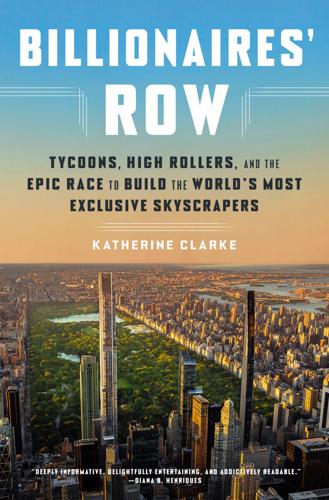
Billionaires' Row: Tycoons, High Rollers, and the Epic Race to Build the World's Most Exclusive Skyscrapers
by
Katherine Clarke
Published 13 Jun 2023
And the boom in alternative money minted a new class of billionaires. They included known entities like the Winklevoss twins, best known as Mark Zuckerberg’s college nemeses, as well as newcomers like Brian Armstrong and Fred Ehrsam, who had founded the cryptocurrency exchange Coinbase, and Sam Bankman-Fried, the now disgraced creator of the competing exchange FTX. At 111 West 57th Street, there was a contest between two wealthy buyers for one of the building’s most expensive units, a 7,130-square-foot aerie on the 72nd floor asking $66 million. The developers had already accepted an offer on the unit when they got a second offer from Gavin Wood, one of the founders of Ethereum, the blockchain-based computer network.
…
The auctioneer started the bidding at $55 million. The assembled spectators looked on enraptured as two major whales emerged, issuing competing bids on the phone via Sotheby’s representatives. The sculpture would ultimately go for $78.4 million to Justin Sun, creator of the cryptocurrency Tron. That Sun was the buyer spoke to the moment perfectly. Cryptocurrency was reaching new heights, Bitcoin billionaires were flashing big checks, and an NFT craze was sweeping the globe. If foreign buyers hadn’t yet returned to the real estate market in force, they were certainly making their mark on the art market. All the while, Macklowe sat among the bidders and onlookers looking dour in a paisley pashmina and velvet loafers.
…
Billionaires like Amazon founder Jeff Bezos saw the value of their companies surge as consumers switched their behaviors amid the pandemic, boosting online services. Another pandemic-era development was the sudden popularity of cryptocurrency. As the once fringe world of digital currencies seemed to enter the mainstream overnight, becoming a more accepted vehicle for investment, cryptocurrency prices soared, creating a lot of new wealth. Some of that wealth flowed into a new investment class of NFT art pieces. The explosion of the market for NFTs, which were essentially unique ownership codes tied to digital assets like images and video clips, accelerated as celebrities like Paris Hilton, Melania Trump, and Justin Bieber got into the NFT game.
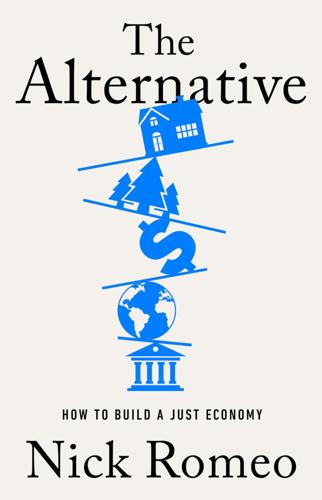
The Alternative: How to Build a Just Economy
by
Nick Romeo
Published 15 Jan 2024
The state of Connecticut approved a program that automatically establishes such accounts for children of low-income families that qualify for Medicaid, but its funding has been delayed and its future is uncertain. ii The Enron collapse, the subprime mortgage crisis, and the 2022 meltdown of the cryptocurrency exchange FTX follow the same basic pattern, in which a sheen of financial wizardry disguises moral corruption and fraud. Conclusion Inflation and the Inevitable The strongest evidence that alternative arrangements are viable is to show that they already exist. Most of this book has examined the work of people and organizations that have already demonstrated the viability of different social and economic models.
…
That these topics are not the subjects of chapters reflects constraints of space and time, availability of sources, or the fact that they are already covered well by other authors. Some omissions, however, do reflect a critical assessment. Cryptocurrencies are not discussed because they are hindering rather than hastening the creation of a just economy. A speculative asset without intrinsic value hawked with propagandistic gusto and created by electronic “mining” that generates severe pollution, cryptocurrencies should be more closely regulated or simply outlawed. None of the ideas discussed here represent a single comprehensive solution to economic and political problems.
…
In November 2021, after President Biden nominated her for the obscure but influential position of head of the Office of the Comptroller of the Currency (OCC), a massive lobbying campaign backed by the banking industry—which is directly regulated by the OCC—targeted her. Her skepticism of unregulated cryptocurrencies and her interest in letting the Fed offer some retail banking services, which would make banking more accessible for the poor but reduce banks’ profits from penalties, showed a commitment to the public interest rather than large banks’ interests. By contrast, Trump’s appointee to the office, former banking executive Joseph Otting, referred to banks as his “customers” and appeared to take policy advice from the industry he was supposed to regulate.

Blood in the Machine: The Origins of the Rebellion Against Big Tech
by
Brian Merchant
Published 25 Sep 2023
There are debates about the merits of 2020s tech trends like the metaverse, Web3, and cryptocurrencies. But there’s also a newly insurgent contingent that is unafraid to vocally reject an entire concept or infrastructure outright—to argue not that these technologies should be built carefully, but that they should not be built at all. Or should be dismantled, with a hammer, if necessary. This debate involves workers building technology themselves, too. When Google and Microsoft sought lucrative military contracts, tech workers launched #techwontbuildit, in stark opposition to the projects that in some cases helped tank them. Crypto and NFTs were besieged by critics concerned that they use too much energy, aimed to commoditize the last corners of the digital commons, and were clearing houses for fraudsters and scammers.
…
Amazon warehouse workers continue to organize around the long shadow of Jeff Bezos’s brutal and machinistic work policies. Opinion polling from Gallup has shown that Mark Zuckerberg is disliked more than the company he runs. A growing number of billionaire founders have become engulfed in scandal, accused of fraud and malfeasance: FTX’s Sam Bankman-Fried. Theranos’s Elizabeth Holmes. The list goes on. There is an animosity toward specific Silicon Valley elites that has only intensified in tandem with the expansion of their power. When managers use technology to embark on the widespread destruction of status and the pathways to upward mobility.
…
Crypto and NFTs were besieged by critics concerned that they use too much energy, aimed to commoditize the last corners of the digital commons, and were clearing houses for fraudsters and scammers. (Sure enough, crypto crashed in 2022, due largely to widespread fraud.) Andreas Malm’s widely read 2021 book How to Blow Up a Pipeline advances the argument that after decades of attempts have failed to peacefully and democratically address climate change, the best viable option is physically destroying fossil-fuel technologies and infrastructure. “Here is what this movement of millions should do, for a start,” Malm wrote. Step one: ban new fossil fuels.
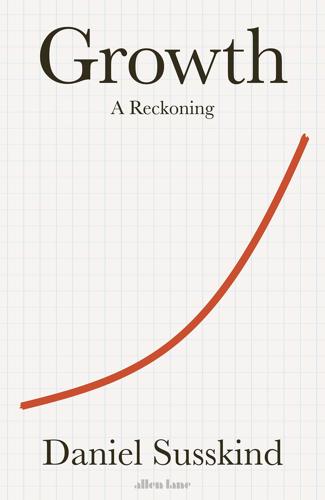
Growth: A Reckoning
by
Daniel Susskind
Published 16 Apr 2024
For if MacAskill was right when he wrote that ‘the world’s long-run fate depends in part on the choices we make in our lifetimes’, then it turns out that one of the greatest existential threats to humanity was not a future nuclear war or super-intelligent AI but a thirty-year-old curly-haired billionaire entrepreneur in our own day.21 This billionaire, Sam Bankman-Fried, was a high-profile public face for long-termism and a major funder of it behind the scenes. His precipitous downfall following alleged fraud at his cryptocurrency exchange FTX – ‘never in my career have I seen such a complete failure of corporate controls’, said the man who cleaned up the Enron scandal – has significantly tarnished the long-termist movement, undermining for some time to come its ability to influence the choices that MacAskill believes to be so vital.22 The other lesson from long-termism’s mistakes is to have practical humility.
…
For a deeper conversation, see Anders Sandberg and David Manheim, ‘What is the Upper Limit of Value?’, Working Paper, 27 Jan 2021. 21 Thought inspired by Tyler Cowen, ‘A Simple Point about Existential Risk’, 13 November 2022, marginalrevolution.com/marginalrevolution/2022/11/a-simple-point-about-existential-risk.html. 22 Charlie Conchie, ‘FTX’s New Bankruptcy Boss Slams “Complete Failure of Corporate Controls”’, CityAM, 17 November 2022. 23 An influential survey by Weitzman of more than 2,160 economists found discount rates ranging from less than zero to over twenty, with a mode of two: Martin Weitzman, ‘Gamma Discounting’, American Economic Review, 91:1 (2001), Table 1, p. 268. 24 Michael Sandel, ‘Populism, Trump, and the Future of Democracy’, the American Academy in Berlin, April 2018, www.americanacademy.de/videoaudio/michael-sandel-trump-populism-future-democracy/. 25 Tony Blair, ‘Tony Blair’s Speech at the Niskanen Center’, 25 February 2019. 26 See, for instance, Landemore, Open Democracy. 27 This argument is from Jamie Susskind, The Digital Republic (London: Bloomsbury 2022). 28 See Susskind, The Digital Republic. 29 OECD, ‘Innovative Citizen Participation and New Democratic Institutions’, 2020.
…
And as technological progress continues its advance, that reach will only extend further over time. As the lawyer Jamie Susskind puts it in his books Future Politics and The Digital Republic, ‘the digital is political.’ Today, code constrains our liberty: a seller can be blocked from advertising certain goods in an online market, a cryptocurrency holder can forget their wallet key and lose their fortune to the blockchain, an electric bike rider can be prevented from going above a set speed or cycling on certain roads. Code determines questions of social justice: there are algorithms that decide which applicants get a job, which citizens get social housing, which borrowers receive a financial loan, which prisoners are released on parole, which patients receive health treatment.

Elon Musk
by
Walter Isaacson
Published 11 Sep 2023
“It’s a real-time news service, and there’s nothing really like it,” he told me. “If you agree it’s important for a democracy, then I thought it was worth making an investment in it.” One person who was eager to be in the deal was Sam Bankman-Fried, the soon-to-be-disgraced founder of the cryptocurrency exchange FTX, who believed that Twitter could be rebuilt on the blockchain. He claimed to be a supporter of effective altruism, and the founder of that movement, William MacAskill, texted Musk to try to arrange a meeting. So did Michael Grimes, Musk’s primary banker at Morgan Stanley, who was working to put together the financing.
…
A few weeks after Burning Man, they flew from south Texas to New York for the Met Gala, the costume extravaganza that Grimes relished. They stayed with Maye in her small apartment in Greenwich Village. Musk had just sent his plane to pick up a Shiba Inu dog he had just bought, named Floki, the breed that is the face of the Dogecoin cryptocurrency. He also brought his other dog, Marvin, who did not get along with Floki. Neither were housebroken. Maye’s apartment became a two-bedroom circus. The outfit Grimes assembled for the Gala was an homage to the sci-fi novel and movie Dune: a sheer gown, a gray-and-black cape, a silver face mask, and a sword.
…
Grimes replied that Bankman-Fried “would do the engineering for social media blockchain integration” and put $5 billion in the deal. He was available to fly to Austin the next day, if Musk was willing to meet with him. Musk had discussed with Kimbal and others the possibility of using the blockchain as a backbone for Twitter. But despite the fun he had with Dogecoin and other cryptocurrencies, he was not a blockchain acolyte, and he felt it would be too sluggish to support fast-paced Twitter postings. So he had no desire to meet with Bankman-Fried. When Michael Grimes persisted by texting that Bankman-Fried “could do $5bn if everything vision lock,” Musk responded with a “dislike” button.
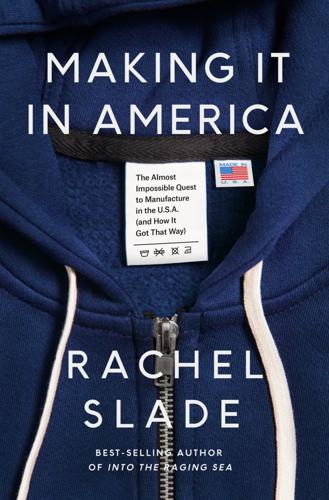
Making It in America: The Almost Impossible Quest to Manufacture in the U.S.A. (And How It Got That Way)
by
Rachel Slade
Published 9 Jan 2024
If Americans want to control their fate, if they truly want to innovate, if they want to forge an ethical future, if they really care about the environment and each other, then they need to start making things for themselves. Skip Notes *1 Consider all the hype around cryptocurrencies. Apparently smart people breathlessly tossed around inscrutable jargon, enticing investors who didn’t want to miss out on something big. With the collapse of the cryptocurrency exchange FTX in November 2022, the skeptics were vindicated: it was all just a massive Ponzi scheme, after all. *2 This isn’t a new concept. Two days after Robert Kennedy announced his presidential candidacy in 1968, he gave a speech at the University of Kansas which included this remarkable passage: “Even if we act to erase material poverty, there is another greater task.
…
He knew something was amiss: “I’m pissed about the reporting on that.” Following an investigation, the NRLB determined that Amazon had “essentially hijacked” the election and ordered a second Bessemer election. In the struggle to organize Amazon workers, Ben saw the bigger story of American business. He knew that the American economy wouldn’t be rescued by cryptocurrencies, altruistic billionaires, or rockets aimed at Mars. Not at all. He didn’t even have much faith in policy. He believed that rebuilding the economy would require an army of ordinary heroes just like Whitney and him who believed that domestic industries could support each other, thereby becoming self-sustaining.
…
W., 15 Bush, George W., 52, 62, 63, 91 Butler, Dave, 180, 221 Buy American Act of 1933, 129n Berry Amendment, 129n, 232n C Cambodia, 25, 38, 257 Cameron, David, 138 Campbellsville, Kentucky, 257–58 Amazon and, 268–69 Fruit of the Loom closure, 268 Carhartt, 27, 139 Carleton Woolen Mill, Winthrop, Maine, 45–48 Carnegie, Andrew, 180 Cartwright, Edmund, 8 Cascade Woolen Mill, Oakland, Maine, 40–41 Casco Bay Wool Works, Portland, Maine, 39–49, 100 closing of, 49 founding of, 40 income growth and employees, 44–45 loss of suppliers, 48–49 Maine Maid Outerwear, 39–40, 44 NAFTA and closing of, 45–46 CFTC (Commodity Futures Trading Commission), 156 Champion Mills, 135 bought out by Sara Lee (1989), 139 factory moved to China, 168 factory moved to North Carolina, 139 NAFTA and move to Mexico, 139 sweatshirt produced by, 135–36 Charney, Dov, 252, 264 Child Labor Amendment of 1924, 134 Chile, 72–73 China American apparel, percentage produced by, 231 American manufacturing sent to, 18 American mills that offshored to, 168–69 Biden administration and, 275 as biggest cotton buyer, 156 British East India Company and, 13–14 Champion Mills moved to, 168 as competitor for American-made goods, 143, 231 currency manipulation and, 212 development of Suzhou, 85–86 global manufacturing domination, 68 global cotton market and, 231–34, 235 hourly rate for labor in, 169 as market for western goods, 46–47 sanctions on, and retaliation, 233 subsidizing manufacturers, 68, 212 sweatshirt production, 29 textile and clothing production domination, 129, 257 as a threat to the U.S., 68 unfair trade practices, 68 U.S. tariffs and, 68 U.S. trade deficit to, 68 Uyghur oppression, 233–34 WHO and, 18, 68, 143 workforce in, 86 CHIPS-Plus Act of 2022, 296 Chouinard, Yvon, 110 CIA, 13, 15 in Chile, 72 in China, 246 in the Congo Republic, 246 Contras and, 15 in the DRC, 246 right-wing coups and, 15, 71 Operation Condor, 15 Cinderella Man (film), 100 Cleaves, Adam, 279 Coal Industry Retiree Health Benefit Act of 1992, 195–96 Coastal Enterprises, Inc., 119 Colbert, Stephen, 140 Cold War, 71–72 Common Threads, Portland, Maine, 122–23, 123n, 128 Congo, Democratic Republic of (DRC), 123–24 Congo Republic, 245–47 Congress of Industrial Organizations (CIO), 64 Conway, Thomas, 217 Coolidge, Calvin, 204, 205 Corbyn, Jeremy, 73 Cornered: The New Monopoly of Capitalism and the Economics of Destruction (Lynn), 259, 261 Corson, Holland, 293 cotton China and, 156, 231–34, 235 cotton gin and, 8–9, 155 environmental issues, 154 futures market and, 156 ginning co-ops, 155 Indian cotton, 154–55 Monsanto’s seed monopoly, 154 Noxubee harvest, 154–55 Pilchman’s American Fabrics and, 168, 231–32 price increases, 231–32 quality monitored by the USDA, 156 U.S. exports, 155–56 U.S. as major grower, 132, 152–56 Covid-19 pandemic, 200–201, 211–13, 227, 234, 242–43, 276, 285 American Roots and, 200–201, 209, 210, 213–19, 223–26, 239, 242–43, 276, 285 brands cancelling orders and, 24 companies closed by, 193, 276 dependency on imports and, 211 drug shortage during, 299, 300n hoarding and, 213–14 market uncertainty and, 232, 276 masks and PPE shortage, 211, 214 national divisiveness and, 222 raw goods shortages, 231 Sintex Industries bankruptcy, 156 vaccines, 231 Waxmans’ Washington Post op-ed, 218, 220 Crawford, Lucy, 5–6, 7 Crown family, 78, 79 Obama and, 78 Whirlpool plant shutdown, 78–80 cryptocurrencies, 14n CSIS (Center for Strategic and International Studies), 297 D Daitch, Mike, 239–40 Dana, Woodbury, 174–75 Dana Warp Mill, Westbrook, Maine, 172, 174–75 Dartmouth College, 102 Davis, Isaac, 201–2 Dawes Act of 1887, 203 de Kooning, Willem, 59n Dell, Michelle, 88–89 Delphi Automotive, Dayton, Ohio, 77 Delta Air Lines, 153 Democratic Party AFL-CIO and, 52–53, 70, 74 free trade, offshoring, and, 70 neoliberalism and, 70, 195 Department of Defense (DOD) prison labor used by, 129–30n required to purchase American-made goods, 129n, 130, 232 spending on textiles and apparel (2021), 129n Depp, Johnny, 119 Devlin, Patti, 193–97, 211, 274 American Roots investment, 196, 227 on bringing back American manufacturing, 196–98 Dexter, Maine, 189–90 Dexter Shoe Co. in, 189, 190, 191–93 Dickens, Charles, 9 Du Pont family, Winterthur museum, Delaware, 34 E Eastman Kodak, 83–85 Japan’s Fujifilm imports and, 84, 85 Eban, Katherine, Bottle of Lies: The Inside Story of the Generic Drug Boom, 299n Eddie Bauer, 110 Eisenhower, Dwight D., 63, 207 Enter the Wu-Tang (album), 137 environmental issues agricultural monoculture, 152–54 cotton and, 154 fabric dye disposal and, 22 GDP not inclusive of, 17 textile manufacturing and, 21–22 used clothing disposal, 22–23 WTO’s detrimental effects, 16 Esquire, 146 Trumka profile, 78–79 Evans, Walker, 59n Evil Geniuses: The Unmaking of America (Andersen), 11 F Factory Man (Macy), 68–69 Fair Labor Standards Act of 1938, 134 Fairness Doctrine, 191 Fall River, Massachusetts, 217, 243, 279 Merrow company in, 40, 244–45, 247 Fanatics, 289 Farley, William, 258–59, 260 Farmstead Magazine, 33 FDRA (Footwear Distributors & Retailers of America), xii Federal Prison Industries, 129–30n Feinbloom brothers, 135–36 Fetterman, John, 139, 139n Feuerstein, Aaron, 105–6, 109–11, 129, 130 Feuerstein, Raphael, 110 Feuerstein, Samuel, 105–6 Flowfold company, Maine, 213 Floyd, George, 220, 241 Ford, Henry, 203, 256 Frazier, Joe, 137n free trade/free market theory, 4–5, 11–15, 24, 33, 63, 71 American economy and, 19, 235 Chile and, 72–73 devastating effects of, 19, 20, 91 ethical or social agenda absent, 23 first American victims of, 18 IMF and, 71 NAFTA and, 15–16, 18–19 Reagan and, 185 USMCA and, 19 WTO and, 16, 22, 84 See also NAFTA Friedman, Milton and Rose, 11–12, 14, 72, 111 Friedman, Vanessa, 139 Frost, Robert, 106 Fruit of the Loom, 234, 252, 257–60, 268 bankruptcy of, 263, 264 Farley takeover, 258–59, 263–64 offshore production of, 262–63 stock buyback at, 263–64, 263n G General Dynamics, 79 George, Billy, 53, 59 Gildan Activewear SRL, 232 Gingrich, Newt, “Language: A Key Mechanism of Control,” 192 Glass-Steagall Act, 94 globalization, 18, 70 Buffett’s miscalculation about, 192 NAFTA, WTO, and, 192 U.N.
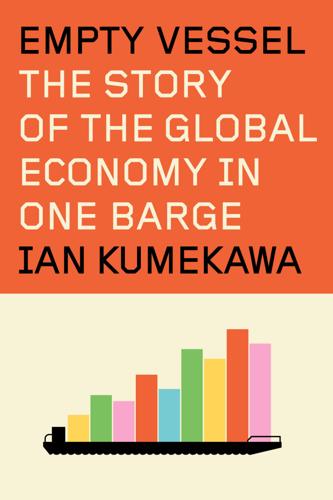
Empty Vessel: The Story of the Global Economy in One Barge
by
Ian Kumekawa
Published 6 May 2025
With permissive banking and tax laws, protected by strict privacy shields and governed by common law, the islands were simultaneously distant and familiar. They were English speaking with well-established communities of white expats.[52] They were also pleasant places to visit, should the need arise. And they still are. It is no coincidence that the now-jailed FTX founder Sam Bankman-Fried holed up in the Bahamas in 2022 as his empire crumbled. His plans to build a massive new office complex in the country’s capital, Nassau, had been welcomed with open arms by then Prime Minister Philip Davis.[53] For the same reasons, the Caribbean was an attractive place to move shipping assets.
…
Arguably, it was worth more as a financial abstraction than as a concrete, working ship. Lots of assets are worth more than their physical components. Money itself works on this premise. The value of a hundred-dollar bill obviously far exceeds that of the paper on which it is printed. The recent rise of cryptocurrencies and non-fungible tokens (NFTs) has provided even more extreme examples of assets that are inherently abstract, detached from the physical world. But there’s another kind of financial asset: one whose financial value depends in some direct sense on an object’s physical usability. Real estate is an example of this kind of asset.
…
After the Vessel relocated to Dorset, its former berth, Pier 36 on the East River, became the departure point for sightseeing cruises and potential mooring for mega yachts.[10] Now, it has been transformed into what’s been called “NYC’s premier event space,” used for immersive art shows, sporting events, and concerts. In 2022, it hosted a major cryptocurrency conference.[11] Pier 40, where the Bibby Resolution was moored, is now a large recreational complex, run by the Hudson River Park Trust. The complex is a mix of new and old New York. It boasts a marine biology field station, a trapeze school, and a sprawling Astroturf sports field in its middle.
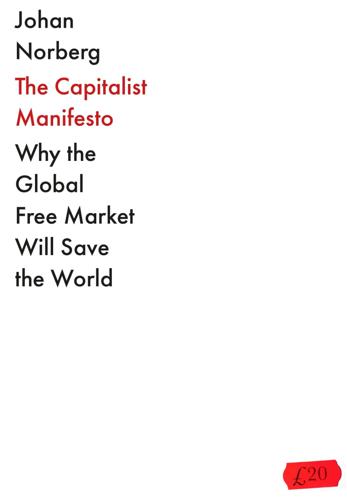
The Capitalist Manifesto
by
Johan Norberg
Published 14 Jun 2023
It is precisely because we cannot count on their goodwill that we need to control them with free competition and consumer choice, as well as an independent legal system and free media. Capitalism is our way to keep capitalists under our control. That does not stop us from regularly discovering scandals in the business world, such as Volkswagen’s manipulated emissions tests, Theranos’ fraudulent blood tests or the collapse of Sam Bankman-Fried’s crypto exchange FTX. At the same time, such scams are getting so much attention, and causing such a strong market reaction, because they are exceptions. There is a built-in protection against crooks in the market: businesses are voluntary collaborations based on trust; no one wants to collaborate with someone who does not inspire trust.

The Long History of the Future: Why Tomorrow's Technology Still Isn't Here
by
Nicole Kobie
Published 3 Jul 2024
We need to be super careful with AI. Potentially more dangerous than nukes.’ Twitter, August 3, 2014, 3.33am. https://biturl.top/QfUjYr ‘New Navy Device Learns by Doing.’ New York Times, July 8, 1958. https://biturl.top/IzQBzq Ongweso, Edward, Jr. ‘OK, WTF Is “Longtermism”, the Tech Elite Ideology That Led to the FTX Collapse?’ Vice, November 23, 22. https://biturl.top/UZnIna ‘Better language models and their implications.’ OpenAI. https://biturl.top/nEjq2i Accessed October 10, 2023. Roose, Kevin. ‘How ChatGPT Kicked Off an AI Arms Race.’ New York Times, February 3, 2023. https://biturl.top/qEBJny Rosenberg, Chuck.
…
That idea is hundreds of years in the making. Pneumatic trains have been blowing through investor cash since Victorian Britain, when the era of Railway Mania saw investment in all sorts of wild train ideas before steam rose to the top as the locomotive design of choice. The railway boom was akin to what we’ve seen with tech cycles, be it Bitcoin or NFTs or generative AI: an idea catches fire and investors empty their pockets in the desperate hope of picking the eventual winner. Faster, cheaper, sustainable transport is a worthy dream, of course. We shouldn’t mock those who can’t stop trying, even if it is against all sense, to create something better.
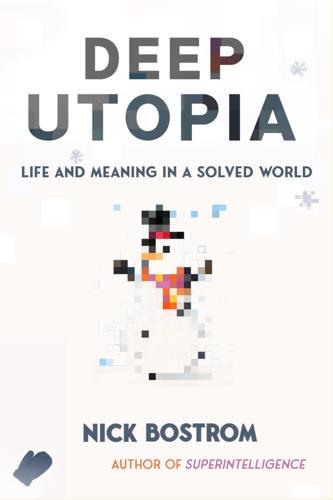
Deep Utopia: Life and Meaning in a Solved World
by
Nick Bostrom
Published 26 Mar 2024
Immediately after the lecture, in the foyer, there will be a book signing of Green Transcendence, and free samples will be available for you to try. And with this, it is my very great honor to invite to the stage the Dean of our School, who will introduce the speaker. Dean: Thank you for your very eloquent introduction. It gives me such great pleasure to welcome you all here to the FTX Theatre, and to introduce our speaker today, an esteemed colleague and one of the longest-serving members of our University. I will keep my remarks very brief, since I know you have all come here to hear the lecture. I still remember very vividly when I first set foot, on the first day of my freshman year, in this multicentennial institution of scholarship and higher learning.
…
Another common failure mode is being based on false views about human nature, or making gross errors of economics or political science. Another typical flaw is a failure to recognize the moral patiency and needs of some oppressed group, such as animals. Comes in many flavors—feminist, Marxist, scientific/technological, ecological, religious. (And now, most recently, crypto?) 2. Post-scarcity utopia Featuring an abundance of material goods and services—food, electronics, transportation, housing, schools and hospitals, etc. Everybody can have plenty of everything (with the important exception of positional goods). Many governance & culture utopias are also, to varying degrees, post-scarcity.